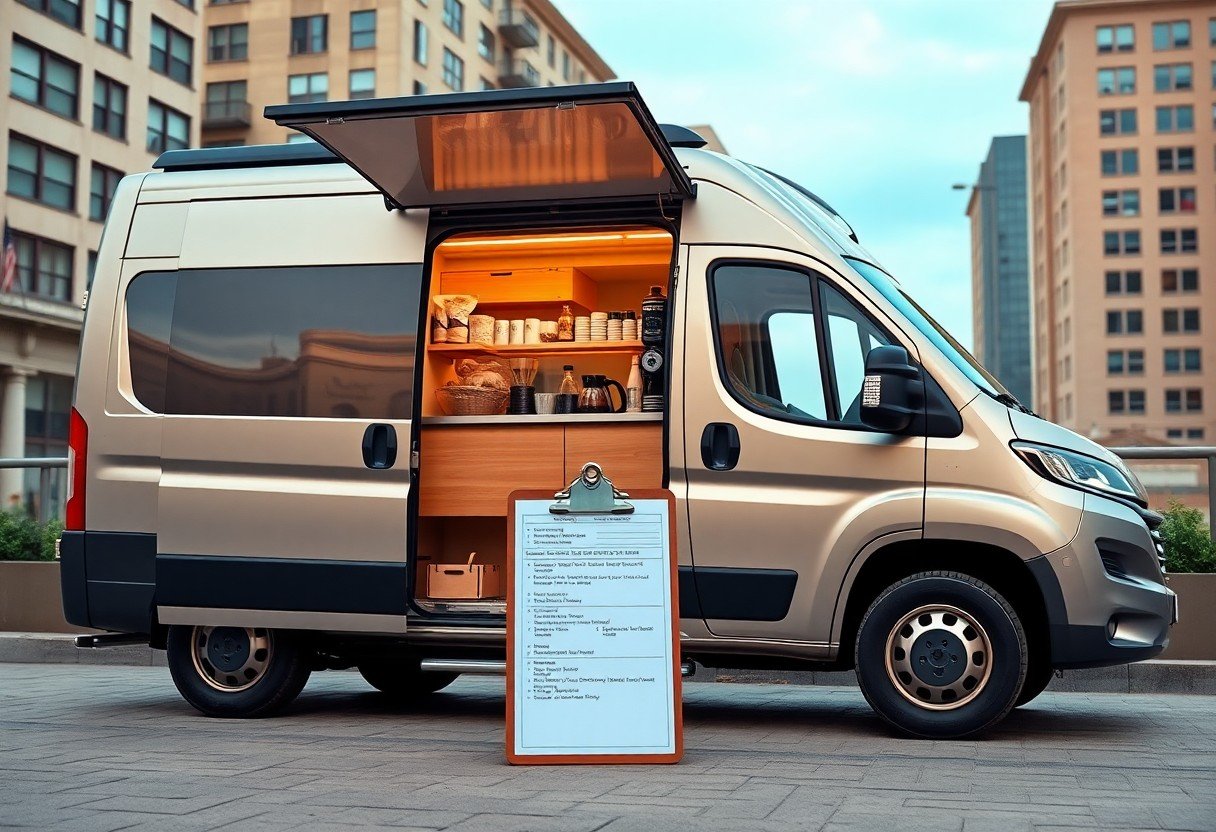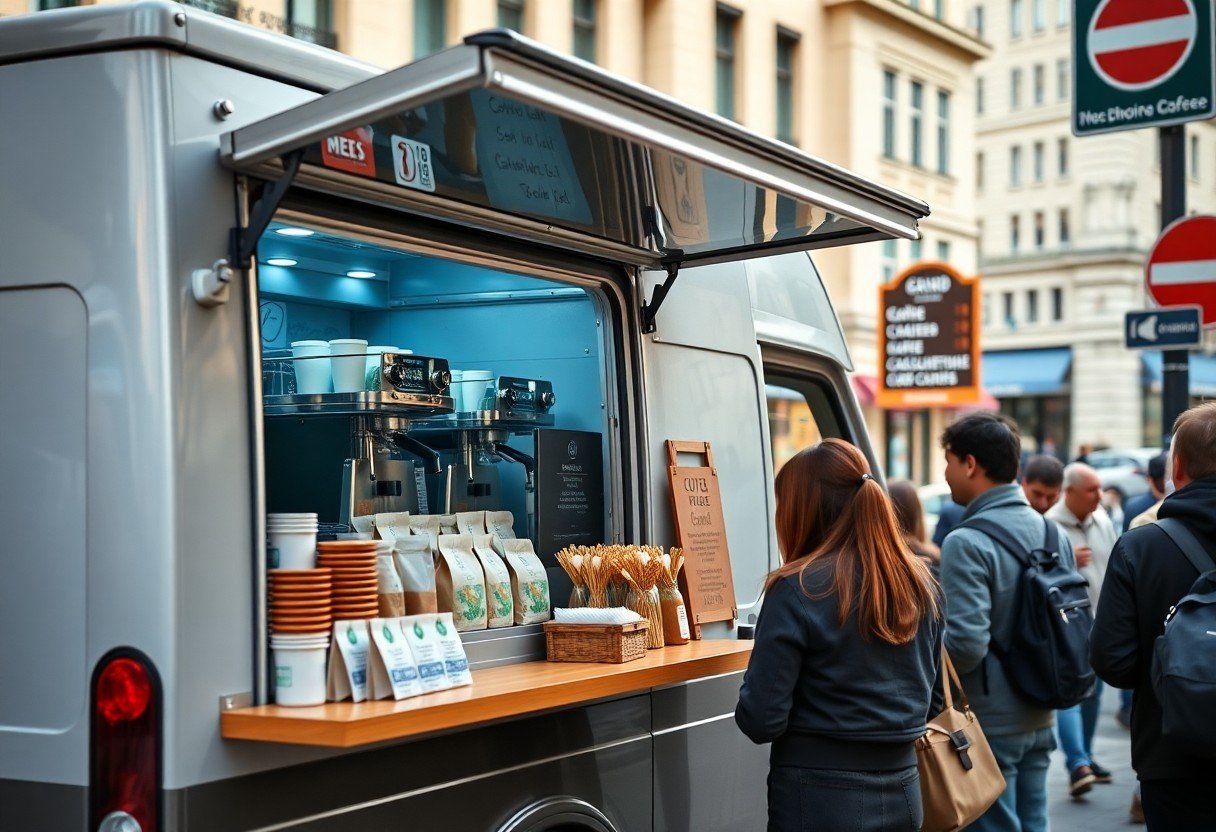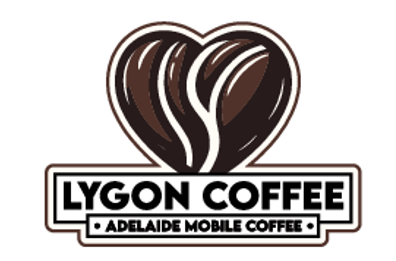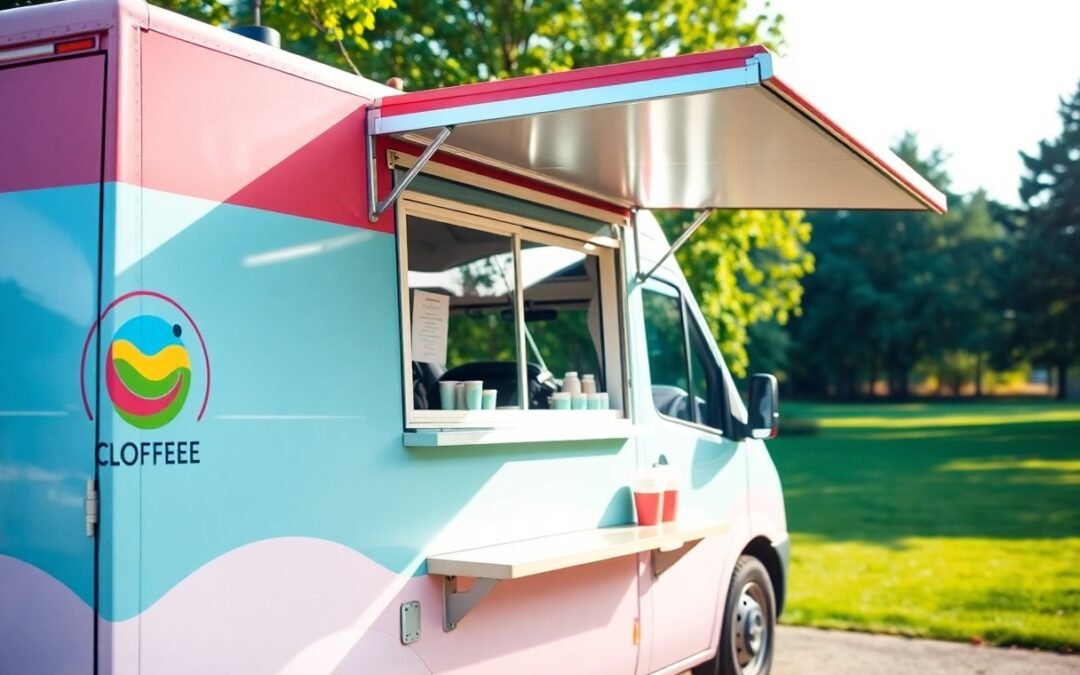There’s a growing demand for quality coffee on the go, making a mobile coffee van a lucrative business opportunity. In this guide, you’ll learn how to navigate the imperative steps to establish and operate your own successful venture, from selecting the right equipment and location to marketing your services effectively. Whether you’re a coffee enthusiast or an aspiring entrepreneur, this comprehensive resource will equip you with the knowledge you need to turn your passion into profit.
Crafting Your Business Identity
Defining Your Brand and Unique Value Proposition
Establishing a clear brand identity is important for distinguishing your coffee van in a crowded market. Your brand should encapsulate the essence of what you offer; consider your target audience’s preferences, the ambiance you want to create, and the quality of your products. Think beyond just coffee beans—highlight your commitment to sustainable sourcing, specialty brews, or unique flavor profiles. Your unique value proposition (UVP) should convey why customers should choose your mobile coffee service over competitors. Perhaps you offer a signature blend or an exclusive brewing technique that would appeal to coffee enthusiasts.
Using market research, you can explore into your competitors’ strengths and weaknesses to identify gaps that your business can fill. If local roasters are popular, leverage partnerships to serve their beans or highlight your personalized service and community engagement. Building a compelling narrative around your brand will resonate with your audience and foster loyalty, encouraging word-of-mouth referrals.
Selecting the Perfect Name and Logo
Your business name is often the first impression you make on potential customers, so it needs to be memorable, reflective of your brand, and easy to spell. A clever or punny name related to coffee can differentiate you, but ensure it also communicates professionalism and quality. Once you settle on a name, creating a logo that aligns with it is equally vital. A well-designed logo serves as a visual representation of your brand and can significantly impact customer recognition and retention.
Research shows that consistent branding across all platforms increases customers’ trust and recognition. Use color psychology to evoke certain feelings—warm tones like browns and creams suggest comfort, while vibrant colors may convey energy and creativity. A logo that looks great on everything from your coffee van to social media avatars can set you apart from the competition.
Consider using online tools or hiring a designer to generate concepts and ensure your logo resonates with your target demographic. Incorporate elements that speak to your coffee expertise, whether it’s through imagery of coffee beans, cups, or brewing equipment. Test a few designs with your target audience to gauge reactions before making a final decision.

Navigating Legal Labyrinths: Permits & Regulations
Understanding Health and Safety Standards
You must familiarize yourself with local health and safety standards that govern food preparation and service to avoid penalties and ensure customer satisfaction. Regulations typically require you to maintain cleanliness in your mobile unit, keep food at safe temperatures, and regularly conduct equipment maintenance. Familiarizing yourself with the guidelines set by entities such as the Food and Drug Administration (FDA) can provide a strong foundation for your operations and promote consumer confidence in your offerings.
Regular inspections by local health departments will likely be part of your experience. Meeting standards surrounding food handling, storage, and sanitation are non-negotiable and should be prioritized from the outset. It may also be beneficial to invest in training for yourself and your staff on safe food handling practices to mitigate risk and enhance overall operational integrity.
Securing Necessary Licenses and Permits
Exploring and obtaining the necessary licenses and permits for a mobile coffee van business can be a complex task. Each municipality has its own requirements, which can include a business license, food service permits, and possibly a mobile vendor permit. Contacting your local health department and business regulatory body will provide specific guidelines, helping you to compile a comprehensive checklist that keeps you compliant with local laws.
Additional permits may be required if you plan on operating at special events or festivals. Often, applying for these permits well in advance is recommended to avoid delays that could hinder your ability to launch your business. Certain areas may also require certificates demonstrating your compliance with food safety training programs, adding another layer to your preparation.
Researching the specific licenses and permits in your area is vital; costs can range significantly based on location. For instance, a food service permit might cost anywhere from $50 to several hundred dollars, depending on your state’s regulations and the scale of your operations. Being proactive in securing these documents can save you time and potential legal complications down the road.

Strategic Planning: Calculating Financial Viability
Creating a Comprehensive Business Plan
Your business plan serves as the blueprint for your mobile coffee van venture, detailing your goals, target market, and operational strategies. Include sections on market analysis, competitive landscape, and marketing strategies to showcase your understanding of the coffee industry. Establish clear objectives for each phase of the business, such as customer acquisition milestones and revenue targets, which can help you track progress and make informed decisions. A robust plan not only guides your operations but also attracts potential investors or lenders who seek evidence of your commitment and vision.
Incorporate financial projections that highlight both short-term and long-term revenue potential. Analyze estimated sales volume based on foot traffic data or specific events where you plan to operate. For example, if you’re targeting local festivals, support your projections with attendance figures and insights from similar events. By including detailed forecasts, you reinforce your business plan’s credibility and provide a tangible roadmap for success.
Budgeting for Initial and Ongoing Costs
Initial costs for your mobile coffee van can vary significantly depending on the equipment and van condition you choose. You’ll need to budget for the van itself, coffee machines, grinders, generators, and necessary inventory such as coffee beans and milk. Depending on your goals, total startup costs can range from $20,000 to $100,000 or more. Additionally, ongoing costs like permits, insurance, maintenance, and monthly inventory should be factored into your financial planning to ensure sustainable operations.
Calculating ongoing costs involves projecting expenses associated with running your van, including fuel, maintenance, and salaries if you hire staff. Be thorough in your approach; consider the costs of supplies based on projected sales volumes and seasonal variations in demand for coffee beverages. Establishing a well-rounded budget helps avoid unexpected financial strain and implements a proactive strategy for growth and profitability.
Additional considerations, such as marketing expenses and potential seasonal adjustments in demand, are imperative for maintaining an accurate budget. For instance, during colder months, you might want to focus on promoting specialty hot beverages to draw in customers, which could lead to fluctuating costs and revenue. Adjusting your financial strategy to reflect these seasonal shifts is key to sustaining profitability throughout the year.

Operational Essentials: Equipment and Suppliers
Choosing the Right Van and Equipment
Your mobile coffee van serves as both your workspace and storefront, so selecting the right vehicle is paramount. Typically, a van should have sufficient space for your equipment, customer service area, and inventory. Consider models with a high roof and ample power supply, such as a Mercedes Sprinter or Ford Transit. To ensure efficiency, equip your van with imperative items like an espresso machine, grinder, brewing equipment, and refrigerators for milk and ingredients. Aim for equipment that is reliable and easy to maintain, as downtime translates to lost profits.
Investing in high-quality, commercial-grade machines can significantly affect the flavor of your coffee and the speed of service. For instance, a dual boiler espresso machine allows you to steam milk and brew coffee simultaneously, increasing efficiency during peak hours. Group heads should have a consistent temperature control system to ensure the best extraction each time. Moreover, consider additional gear such as a point of sale (POS) system that integrates with your inventory management, helping streamline operations and track sales effectively.
Sourcing Quality Coffee and Ingredients
Your coffee’s flavor and quality hinge on the ingredients you choose, making it imperative to source from reputable suppliers. Establish relationships with local roasters who can provide fresh, seasonal beans and unique blends. Many successful mobile coffee businesses thrive on offering distinctive flavors that attract a loyal customer base. Crafting bespoke drinks or specialty brews using single-origin beans can set you apart from competitors. Moreover, explore partnerships with local dairy farms for high-quality milk and organic suppliers for syrups and pastries.
Working with suppliers who align with your brand values can also enhance your overall business identity. Look into fair trade coffee suppliers that support ethical sourcing practices, which resonates with increasing customer awareness regarding sustainability. You could even consider engaging with local farmers’ markets to source ingredients, reinforcing your community ties and enhancing customer loyalty.
Marketing Your Mobile Coffee Experience
Leveraging Social Media and Online Strategies
You can create buzz for your mobile coffee van by utilizing social media platforms like Instagram, Facebook, and TikTok. Post high-quality images of your coffee creations, daily specials, or events you’re attending to engage potential customers. Consider using Instagram Stories or reels to share behind-the-scenes glimpses of your preparation process or to highlight customer testimonials. Hashtags relevant to your location, coffee culture, and special promotions can expand your reach, bringing in new customers who are searching for mobile coffee experiences in your area.
Investing in a targeted advertising campaign on social media allows you to focus on demographics that align with your ideal customer profile. Facebook Ads, for instance, can promote your offerings specifically to local residents. Additionally, maintaining a website with a blog can improve your search engine visibility. Sharing articles on coffee trends or local events can attract visitors, increasing your audience base while establishing your authority as a local coffee expert.
Building Partnerships with Local Businesses
Collaborating with local businesses can create mutually beneficial opportunities to expand your customer base. Establish partnerships with nearby offices, event coordinators, or establishments that host foot traffic like markets and festivals. Offer packages where companies can provide your coffee as a perk for their employees or arrange to set up at events they organize. This strategy not only boosts your visibility but also solidifies your presence in the community.
Local breweries, bakeries, or even bookstores can serve as excellent partners, providing cross-promotional opportunities. You could feature their products in your coffee offerings, or simply have your van parked nearby, providing coffee during their events. Engaging in community events or sponsoring local sports teams also fosters goodwill and reinforces your brand’s presence, turning casual customers into loyal fans.
Summing Up
Presently, launching a profitable mobile coffee van business involves careful planning and execution. You need to conduct thorough market research to understand your target audience and competitive landscape. Selecting the right equipment, sourcing quality ingredients, and establishing a strong brand identity will play a significant role in your success. Developing a solid business plan that outlines your goals, strategies, and financial projections can help set a strong foundation for your venture.
As you initiate on this journey, focus on delivering exceptional customer service and maintaining high product quality. Effective marketing strategies, such as social media promotion and local advertising, will drive awareness and attract customers to your coffee van. By continuously adapting to market trends and customer preferences, you can grow your business and increase profitability, ensuring long-term success in the mobile coffee industry.
FAQ
Q: What are the initial costs involved in starting a mobile coffee van business?
A: Initial costs typically include van purchase or lease, equipment such as espresso machines and grinders, initial inventory of coffee and supplies, permits and licenses, and branding materials. Depending on location and setup, costs can range from $10,000 to $50,000.
Q: How do I choose the right location for my mobile coffee van?
A: Ideal locations include high foot traffic areas such as parks, business districts, and events. Research local demographics and competitor presence. It’s beneficial to scout locations during peak hours to evaluate potential sales.
Q: What licenses and permits do I need to operate a mobile coffee van?
A: Requirements vary by region but generally include a food service permit, health department approval, business license, and possibly zoning permits. Consult local authorities for precise regulations in your area.
Q: How can I effectively market my mobile coffee van business?
A: Use social media platforms to create awareness and engage with customers. Consider collaborating with local businesses, offering promotions, attending events, and leveraging signage on your van. Building an email list for special offers can also be beneficial.
Q: What types of coffee and products should I offer to maximize profits?
A: Focus on high-demand items such as specialty coffees, teas, and pastries. Consider unique offerings like seasonal beverages or locally sourced products. Keeping a diverse but manageable menu can help attract a broader customer base while avoiding waste.

